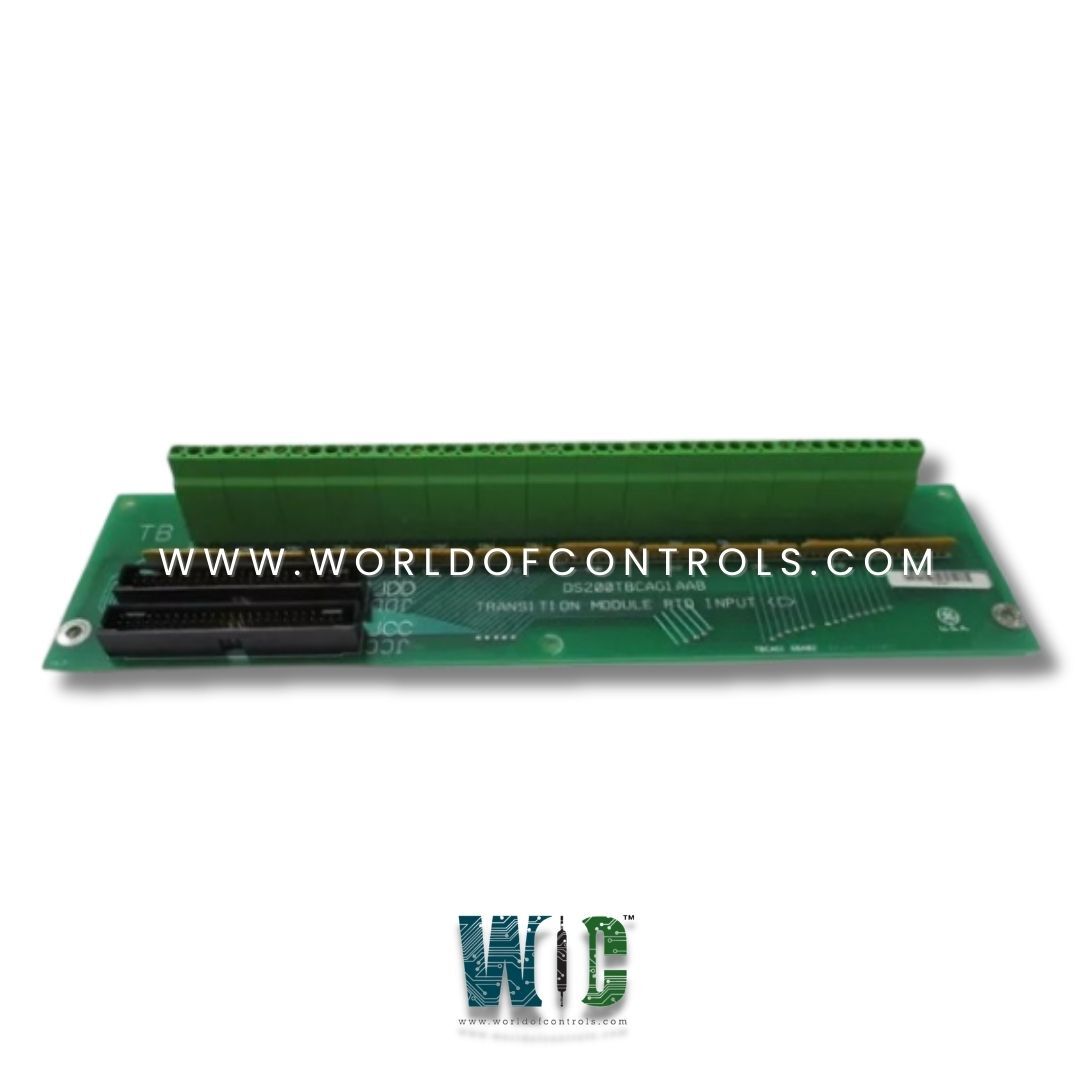
World Of Controls understands the criticality of your requirement and works towards reducing the lead time as much as possible.
DS200TBCAG1ABB - RTD Terminal Module is available in stock which ships the same day.
DS200TBCAG1ABB - RTD Terminal Module comes in UNUSED as well as REBUILT condition.
To avail our best deals for DS200TBCAG1ABB - RTD Terminal Module, contact us and we will get back to you within 24 hours.
Part No.: DS200TBCAG1ABB
Manufacturer: General Electric
Country of Manufacture: United States of America (USA)
Technology: Surface-mount
Temperature Operating: -30 to 65oC
Product Type: RTD Terminal Module
Availability: In Stock
Series: Mark V
DS200TBCAG1ABB is an RTD terminal module developed by GE. It is a part of Mark V control system. It functions as an RTD Termination Module and an Analog I/O Terminal card. This dual functionality underscores its capability to handle analog input and output signals effectively. It features two blocks of 90 signal wire terminals and is equipped with two 50-pin connectors labeled JDD and JCC. These connectors facilitate the interface with other components, ensuring robust connectivity and signal integrity.
These dedicated signal pathways ensure clear and interference-free communication, which is crucial for temperature-sensitive applications in industrial automation.
The WOC team is always available to help you with your Mark V requirements. For more information, please contact WOC.
What is DS200TBCAG1ABB?
It is an RTD terminal module developed by GE under the Mark V series.
How does it handle analog signal processing and interface with other components?
It interfaces with other system components via its JDD and JCC connectors, which route signals to and from the board within the control system. This setup optimizes signal management and ensures precise data processing for temperature monitoring and control applications.
What maintenance procedures should be followed for the RTD Termination Module?
Regular maintenance includes ensuring the integrity of signal wire connections, monitoring the condition of the protective coating, and verifying the tightness of mounting screws. Labeling and documenting signal connections before any disconnection is recommended to minimize downtime and ensure correct reinstallation.